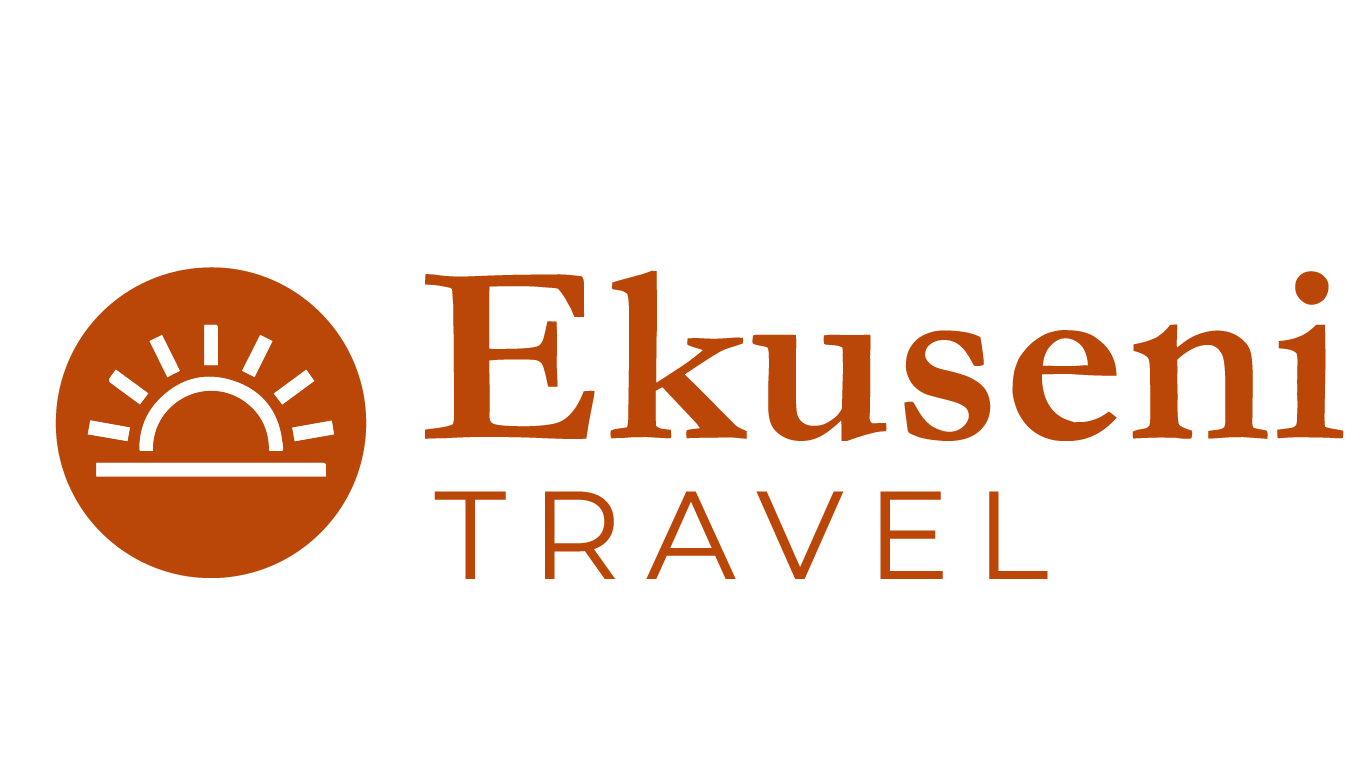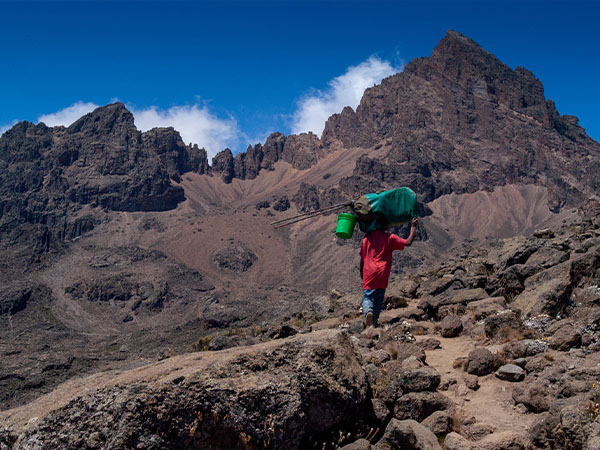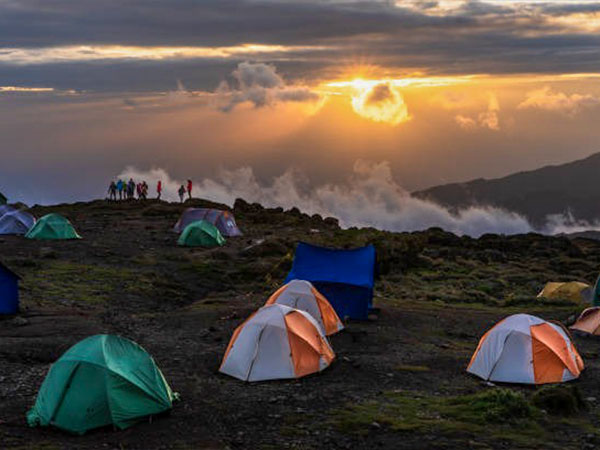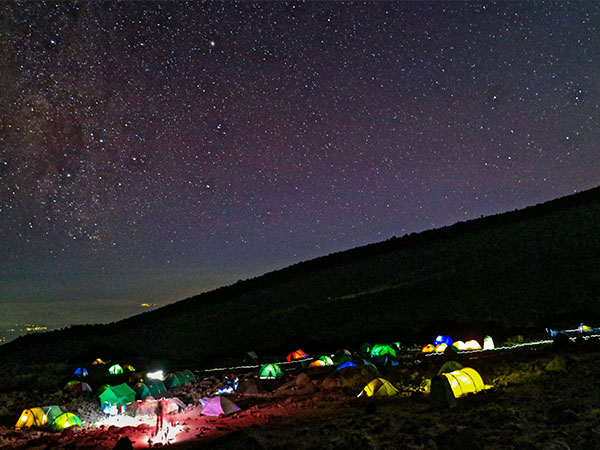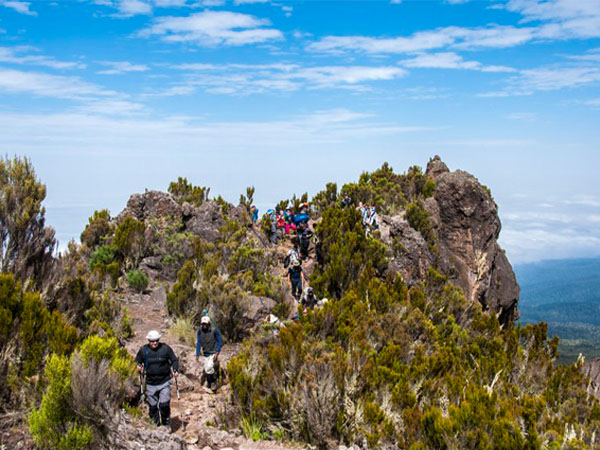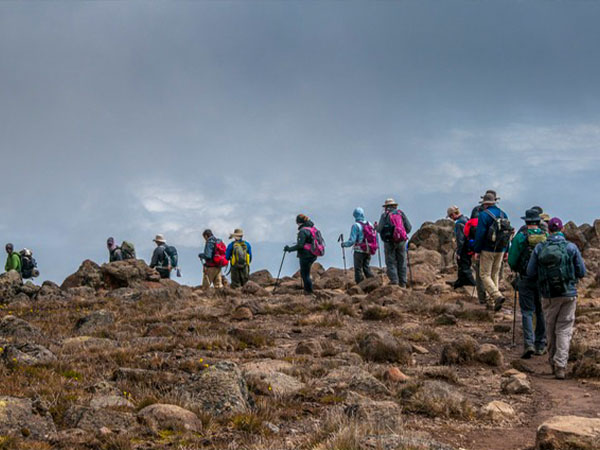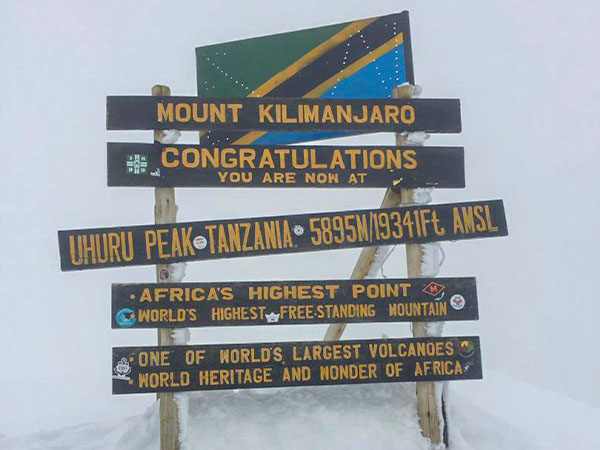Rongai Route Kilimanjaro
7-Day Quiet Northern Climb for Breathtaking Kibo Views
Customizable Rongai Climb Itinerary
If you want the quieter path, uncompromised views of Kibo’s stunning face, and a superior wilderness experience, you take the Rongai Route. This is your chance to climb Kilimanjaro the way it was meant to be done.
The Rongai Route: It's Not What You Think
Travelers often come to the Rongai Route with three specific doubts: that its remote Northside location means it is too cold, lacks views, or that its quiet reputation means less support.
Let us be clear: While the start at Rongai Gate is secluded, we see this as the main advantage, it offers the truest wilderness experience and the quietest climb on Kilimanjaro.
Regarding the environment, the Northern Route is the mountain’s driest side, meaning you encounter less rain, dampness, and condensation compared to the southern routes. This, combined with our premium 7-day itinerary’s superior acclimatization, gives you a distinct advantage.
Finally, any suggestion of poor views is simply wrong; traversing The Saddle grants you the most spectacular, uninterrupted view of Kibo, guaranteeing you experience Kilimanjaro from a truly unique perspective.
Rongai Route Kilimanjaro Climb, at a Glance
-
Duration: 7 Days (6 nights camping on the mountain).
-
Perfect for: Climbers who prioritize solitude, high summit success, and the most unique perspective of the mountain. Perfect for seekers of the Kilimanjaro Quiet Climb.
-
Key Destinations: Rongai Gate (Northern Approach), Mawenzi Tarn (Crucial Acclimatization Hub), The Saddle, Uhuru Peak.
-
Ekuseni Difference: The Northern Acclimatization Edge. We guarantee a flexible pace, and the essential 7-day schedule for peak success
Trip Highlights
The Quiet Climb: True Northern Solitude
The Rongai Route offers genuine wilderness silence. You get to focus solely on your achievement, far from the congestion of the southern routes.The Acclimatization Edge at Mawenzi Tarn
Our 7-day schedule guarantees a crucial acclimatization day at the beautiful Mawenzi Tarn Camp. This allows you to execute the high-success Climb High, Sleep Low strategy, maximizing your body’s preparation for Uhuru Peak.Views Across The Saddle and the Kenyan Plains
This route delivers unique visuals: sweeping panoramas of the Kenyan plains from Simba Camp and the unforgettable traverse of The Saddle, a high-altitude desert between Kibo and Mawenzi.The Best of Both Worlds: Ascend North, Descend South
Benefit from the remote solitude and dry environment of the northern ascent, then use the swift and well-established Marangu route for your descent. You get to witness the best of both sides of Kilimanjaro.
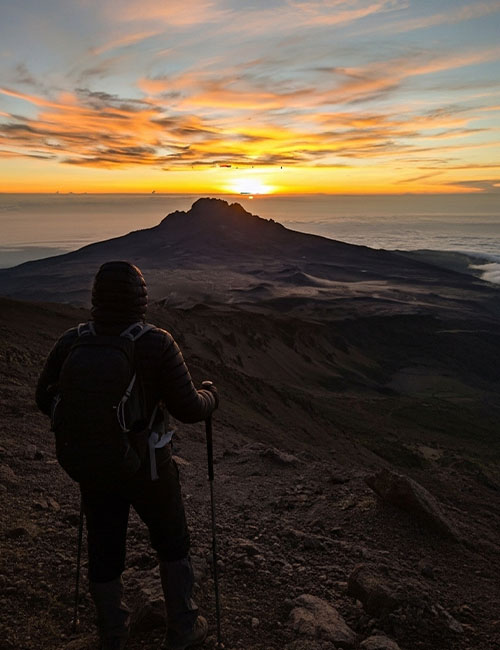
7-Day Rongai Route Climb, Itinerary
A Note on Your Schedule and Flexibility
This itinerary focuses exclusively on the 7 climbing days on Mount Kilimanjaro. To ensure the highest chance of success and to honor your health, we strongly encourage all our guests to plan for a full rest day before the trek begins and a full recovery day after the descent. This flexibility allows you to acclimatize to local conditions before exerting yourself and ensures a relaxed departure from Tanzania.
Day 1: Moshi to Rongai Gate to Simba Camp
We begin with a road trip from Moshi to the Rongai Gate (also known as Nalemoru Gate) for registration. The climb starts on a gentle path, passing through rich farmland before entering the lush Montane Forest. This first day is short and easy, designed to ease your body into the mountain. We camp at Simba Camp, located on the edge of the moorland with excellent views over the vast Kenyan plains to the North.
Trekking Time: approx 3-4 hours
Habitat: Montane Forest
Day 2: Simba Camp to Second Cave Camp
The trail continues with a steady, gradual uphill trek through the health and moorland zone. We take a slow and measured pace (pole pole), as altitude gain is the priority. We reach the Second Cave Camp, where you are now fully immersed in the wilderness, with spectacular, close-up views of Kibo and the eastern ice fields.
Trekking Time: approx 3-4 hours
Habitat: Moorland
Day 3: Second Cave Camp to Kikelewa Camp
Today is a shorter hike, allowing your body to consolidate the previous day’s altitude gain. We continue across the rolling moorland, with the majestic, jagged spires of the Mawenzi Massif dominating the eastern skyline. We camp at Kikelewa Camp, a beautiful, sheltered valley spot where the sense of solitude is total.
Trekking Time: approx 3-4 hour
Habitat: Semi-Desert
Day 4: Kikelewa Camp to Mawenzi Tarn
This is a steeper, yet rewarding climb. We ascend rapidly onto the alpine desert zone, reaching the stunning Mawenzi Tarn Camp. This camp is spectacularly set in a cirque beneath the Mawenzi peaks, next to a small tarn.
The views here are immense, and the afternoon is dedicated to hydration, rest, and preparation for tomorrow’s crucial acclimatization day.
Day 5: Mawenzi Tarn (Acclimatization) to Kibo Hut
We start with a short, easy acclimatization walk high up on the Mawenzi Ridge to maximize your body’s red blood cell production—a deliberate high-success strategy. We then traverse The Saddle, the massive, high-altitude desert that links Mawenzi and Kibo. The terrain is volcanic and truly lunar-like. We reach Kibo Hut, located right at the foot of the final summit climb. Tonight, we rest, enjoy an early dinner, and prepare all gear for the summit push.
Trekking Time: approx 4-5 hours
Habitat: Alpine Desert
Day 6:Kibo Hut to Uhuru Peak to Horombo Hut
.We begin the final ascent between midnight and 2:00 am, climbing the steep scree slopes toward Gilman’s Point (5,681m) for a magnificent sunrise over Mawenzi. We then continue on the crater rim to Uhuru Peak (5,895m)—the highest point in Africa. After soaking in the achievement, we descend rapidly back to Kibo Hut for a short rest before continuing the long descent down the Marangu Route to Horombo Hut for a much-deserved night’s sleep.
Ascent Time: $\approx 6-8\text{ hours}$
Descent Time: $\approx 5-7\text{ hours}$
Habitat: Arctic, then Heath
Horombo Hut to Marangu Gate to Moshi
Today is the final walk down. We descend through the health and into the lush Rainforest of the Marangu side. We reach the Marangu Gate for your sign-out and certificate ceremony. Our private vehicle will be waiting to transfer you back to your hotel in Moshi for a celebratory hot shower and dinner.
Trekking Time: $\approx 5-6\text{ hours}$
Habitat: Rainforest
What's Included and Excluded?
Transparency is key to a smooth journey. Here is a clear breakdown of what is covered in your Rongai Climb arranged by Ekuseni:
Price Includes
Professional Mountain Crew: Certified, experienced English-speaking Lead Guide (WFR-trained), Assistant Guides, dedicated Chef, and Porters.
Safety & Medical: Comprehensive medical kit, oxygen cylinder, and portable Hyperbaric Chamber carried on every climb. Daily health checks are performed twice by our WFR-trained guides.
Park Fees: All National Park entry, camping, rescue, and conservation fees as required for the 7-day Machame Route.
Accommodation: High-quality, four-season sleeping tents (used for two people max for space and comfort).
Meals: All meals on the mountain (Breakfast, Lunch, Dinner) prepared fresh by our mountain chef, plus purified drinking water.
Camping Comfort: Dining tent, tables, chairs, thick sleeping mattresses, and private flush toilet facility for our group.
Transfers: All necessary roa transfers between Moshi/Arusha and the Machame and Mweka Gates.
Price Excludes
Flights: International flights to and from Kilimanjaro International Airport (JRO).
Accommodation: Hotels/lodges before and after the climb (We can arrange these for you upon request).
Gear: Personal clothing and equipment (sleeping bag, trekking poles, etc.)—though high-quality rentals can be arranged.
Tipping: Gratuities for your mountain crew (recommended guideline provided when you book with us).
Insurance: Travel and medical insurance, including coverage for high-altitude trekking and emergency evacuation.
Personal Items: Visa fees, alcoholic drinks, soft drinks, laundry, and personal spending money.
Ready to Summit? Start Planning Your Climb Now
Use this form to tell us about your group, preferred travel dates, and any specific questions you have about gear or our high summit success rate.
This is not a commitment to book. This is simply the fastest way to connect with your Ekuseni friend and receive a personalized quote and detailed information pack tailored specifically to your Rongai climb.
Common Questions, Expert Answers
How does the Rongai Route compare in difficulty to Machame or Lemosho?
The Rongai Route is generally considered easier than Machame or Lemosho due to its unique profile. It offers a more steady, gradual ascent from the north, avoiding the constant, taxing “up and down” trekking required for acclimatization on the popular southern routes. The terrain is also drier, meaning less mud and a smoother climb overall.
What is the summit success rate for the 7-day Rongai Route?
While official figures are scarce, reputable operators who prioritize safety and the 7-day schedule (like Ekuseni) report a very high summit success rate, often above 80%. This is directly linked to the route’s gradual ascent and our dedicated acclimatization day at Mawenzi Tarn.
Why is the Rongai Route less crowded than other options?
The Rongai Route is the only one approaching from the North, making the trailhead more remote and requiring a longer drive from Moshi. This naturally deters mass tourism operators. If you prioritize solitude and a genuine wilderness experience, this is your route—you’ll often feel like you have the mountain to yourself.
Are we sleeping in tents or huts on the Rongai Route?
The Rongai Route is a camping route, meaning you will be sleeping in high-quality, four-season tents for the duration of the climb. The only exception is on the final night of the descent, when we use the communal Horombo Huts after the summit push.
Why do we ascend on the North but descend on the South (Marangu Route)?
This feature is a major benefit of the Rongai Route. Ascending the North ensures you experience the quietest part of the mountain. Descending via the Marangu side (to Marangu Gate) offers two advantages: First, it gives you views of both the dry northern slopes and the lush southern rainforest. Second, it utilizes the fastest and safest descent path off the mountain after summit day.
What are the Necessary Gears and Equipment? Can I Rent Them?
You will need layered, high-quality gear for temperatures ranging from tropical to Arctic. We provide all group camping gear (tents, mess hall, toilet). We can happily arrange high-quality rentals for personal items like a 4-season sleeping bag, down jacket, and trekking poles if you prefer not to travel with them.
What unique scenery will I see on the Rongai Route?
The Rongai offers scenery found nowhere else on the mountain. You’ll see the lush northern forest (where wildlife sightings are more common), the spectacular, craggy peaks of the Mawenzi Massif, and the unforgettable traverse of The Saddle, a vast, rocky desert that gives a truly unique sense of scale.
Where Do I Sleep the Night Before and After the Climb?
For flexibility, the climb fee does not include pre- and post-climb hotel nights in Moshi/Arusha. However, as your local friend, we will happily arrange comfortable, high-quality lodge accommodation for you based on your preference and budget, ensuring you get the best rest before and after your expedition.
What happens if I get sick or need to turn around early?
Your safety is our absolute priority. Our guides are Wilderness First Responder (WFR) certified, carry emergency oxygen, and use pulse oximeters daily. If you must descend early, you will immediately be accompanied by a dedicated assistant guide and porter to ensure a safe and comfortable exit from the mountain.
Can I combine my Kilimanjaro climb with a Safari or Zanzibar trip?
Absolutely. You can combine the exhilarating Rongai climb with a rewarding experience afterward. We specialize in seamless, customized itineraries, we can arrange your Tanzania Safari to the Serengeti and Ngorongoro Crater, or arrange your transfer to the coast for a relaxing Zanzibar Beach escape immediately following your descent.
